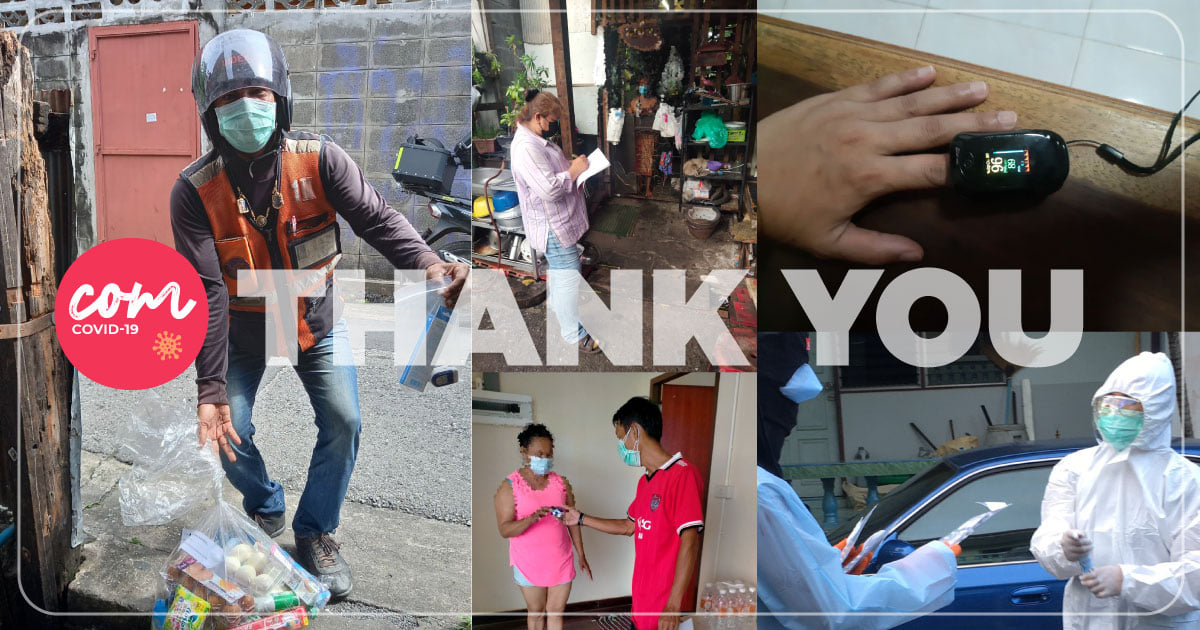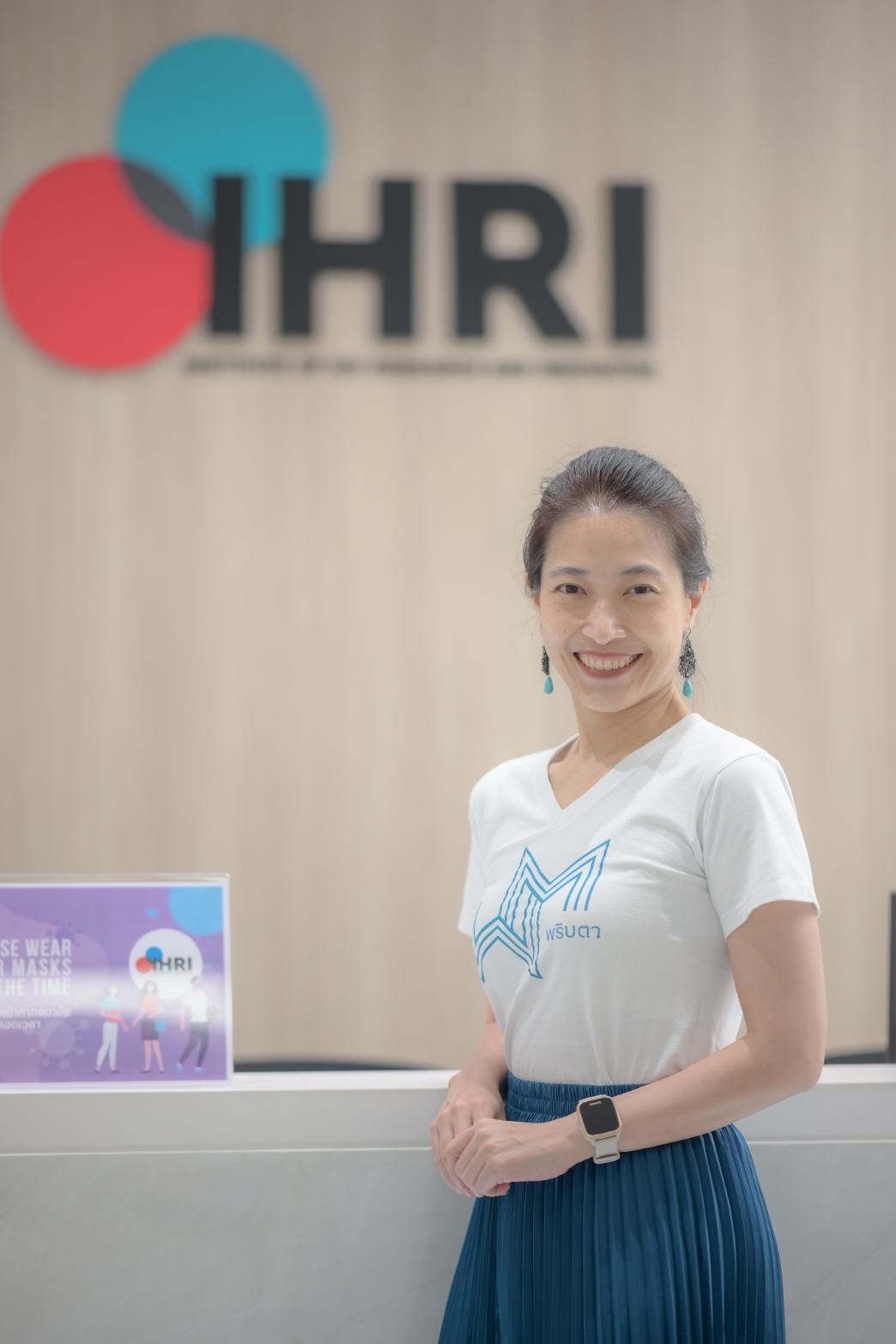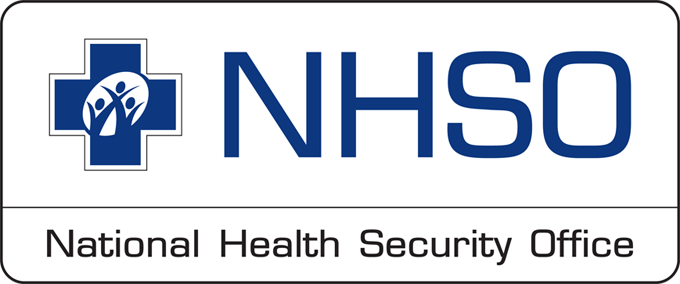
- Home
- DescriptionNews
Home Isolation, Community Isolation, aimed at curbing COVID-19 deaths and new infections in Thailand

Home Isolation, Community Isolation, aimed at curbing COVID-19 deaths and new infections in Thailand
Nittaya Phanuphak, MD, PhD
Executive Director
Institute of HIV Research and Innovation (IHRI)
Over the past week, the terms Home Isolation and Community Isolation have been mentioned very often and become familiar to many, as they were adopted as new key strategies to cope with the surge in number of new COVID-19 cases. Hospitals, field hospitals and hospitels are now being overwhelmed by the rapid rise in new infections, while the need to prevent infected people from developing severe symptoms of the disease or dying remains. So does the need to bring down the number of new infections in communities.
On the surface, the Home Isolation and Community Isolation processes appear to be easy tasks that require a similar approach to manage as in the better known telehealth service, which has been adopted in the previous waves of COVID-19. But in reality, there are several aspects of Home Isolation and Community Isolation and factors to ponder before implementing them. Among these aspects and factors are the condition of the house, the number of people living in it, how much the other members of the community agree with these forms of the COVID-19 isolation in their community, the ability of the community or the healthcare provider concerned to take care of the patients who will also need to be supplied with three meals a day, stigma attached to COVID-19 infection, discrimination against infected people, the risk of their rights being violated and stress associated with the infection. So, this is not simply arranging the telehealth service for the people who have to go into isolation at home or in a community.
In this regard, the team providing Home Isolation and Community Isolation services should consist of members from various disciplines including the infected people themselves, their families, community leaders, nurses and doctors. Policy makers of the country, meanwhile, have to listen to opinions of and respect and trust all parties in the team. The policy makers also need to improve public understanding of the goal and importance of Home Isolation and Community Isolation as well as roles of the individuals in these COVID-19 isolation formats. The government also needs to plan and invest in bolstering public confidence in these isolations programmes and enhancing the people’s ability to become a part of the programmes, in order to prevent miscommunication that may result from different political preferences and concern among certain experts.
Effective cooperation among interdisciplinary parties in creating a good standard of both Home Isolation and Community Isolation is also crucial for assuring the infected people and their families they will definitely receive good and standard holistic care at home or in the community, although they may not be able to be admitted to the hospital for treatment just yet. The standard of Home Isolation and Community Isolation must be in line with the National Health Security Office’s reimbursement regulations and a guideline on COVID-19 treatment and care by the Department of Medical Services. And it is equally important to assure healthcare providers in the community, at medical clinics and in hospitals what they are doing are actually subject to daily adjustment to keep up with the changing situation of the COVID-19 outbreak in the country and that they will totally be finally supported. They need to be assured also that sufficient funds are earmarked for financing the provision of these COVID-19 isolation services and mechanism to prevent corruption and the misuse of these funds and medical supplies provided are being implemented all along. More importantly, These healthcare providers need to be assured that they won’t later end up facing an investigation or criticism, in which they will likely be judged as if they work in a normal situation. They shouldn’t be ordered, when the public health crisis has ended, to return the money paid to them for providing the isolation service as a result of such an investigation either.
Prompt provision of healthcare at home or in the community to COVID-19 infected patients who only have asymptomatic and mild symptoms of the disease (Green Group) as soon as they are confirmed to have the virus is important. So is constant follow-up care by the people in the same house or community and nurses and medical doctors who provide them the telehealth service. These elements are crucial for assuring the infected patients that they will promptly receive favipiravir when signs of lung infection emerge. Patients with moderate (Yellow Group) and severe (Red Group) symptoms are also assured they will receive favipiravir treatment to keep the lung infection at bay and other treatment to control other symptoms if they really still have to wait for a hospital bed. These are all aimed at “mitigating the severity of COVID-19 infection and reducing the number of fatalities”.
As for the need to “curb the number of new infections in the community as fast as possible”, a key factor is how well an infected person is isolated from the rest of the family or housemates during Home Isolation or Community Isolation. Both infected people and the other people living in the same house or community require not only knowledge about effective COVID-19 isolation but also other forms of support including three meals a day. Other types of support they may also need include other basic necessities in case the infected people are ones who normally work to financially support their families. They will also need help with disinfecting their houses and household utensils. Sometimes, they may also need help with improving understanding among their neighbours and dealing with the parties that violate their rights such as the media, their employers or their schools. These are all required to ensure the COVID-19 isolation at home or in the community is conducted properly and not impacted by social and economic factors. Aside from preventing infected people from spreading the virus to others in the family or community, active case finding is also important for curbing the number of new infections and needs to be carried out all along. Contacts of a confirmed COVID-19 case need to be sorted into groups concerning levels of their risk of contracting the virus and go into isolation as well. Prioritising as to who should get vaccinated against COVID-19 first and later in the communities with a serious outbreak situation is also important for containing the spread of the virus.

Since Home Isolation and Community Isolation now undeniably concern everyone in some ways, aside from understanding them we may also help further by spreading the knowledge about these two types of COVID-19 isolation to others to improve public understanding about them. Some may produce content for publishing on various media platforms to educate various groups of people about the procedure of Home Isolation and Community Isolation, while others may help prepare meals for supplying to the infected people in isolation or transporting thermometers, pulse oximeters and medications to the infected patients. As for those who may not be able to get involved in the afore-mentioned voluntary activities, they may choose to donate money for purchasing more of such medical devices instead. And for the people who understand the languages used by migrant workers in Thailand, they can also help by simply volunteering as interpreters for healthcare workers when it comes communicating with migrant workers.
Last but not least, I strongly believe everyone can help make the country’s implementation of Home Isolation and Community Isolation a good quality service with flexibility and maximum participation by communities. In conclusion, Home Isolation and Community Isolation both consist of four key elements, namely public and community preparation, prompt provision of care and treatment to COVID-19 infected patients, fast and effective searches for contacts of infected people, and improving access to the COVID-19 vaccination. These will gradually improve the hospital bed shortage situation and we will soon see a drop in the number of COVID-19 deaths and new infections.

